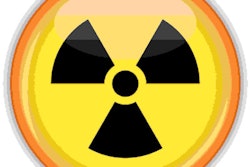
The U.S. Nuclear Regulatory Commission (NRC) is proposing several updates in its regulatory guide on how best to handle patients who receive radioactive materials as part of their imaging scans.
The changes in draft regulatory guide DG-8057 include guidelines on communicating safety-related instructions to patients before and after they have received a radiotracer. It also includes a new section offering guidance on how to deal with the death of patients after they were administered a radiopharmaceutical or given an implanted device.
The new proposal follows several news stories that broke in 2019 over the handling of patients who died after receiving radionuclide therapy. In one incident, detectable levels of radiation were found on crematory equipment after the cremation of an Arizona man who died after receiving lutetium-177 therapy.
And in Canada, a Toronto man was told that his father couldn't be cremated because he had received brachytherapy before he died. The provinces of Ontario and Saskatchewan have laws in place preventing the cremation of brachytherapy patients.
In addition, the NRC offers a revised table for radiopharmaceutical dosage for female patients who are breastfeeding an infant or child, and the commission included a recommendation on how long the routine should be interrupted to ensure NRC standards are maintained.
The proposed revisions are included in the Federal Register notice. The comment period ends on August 26.




















